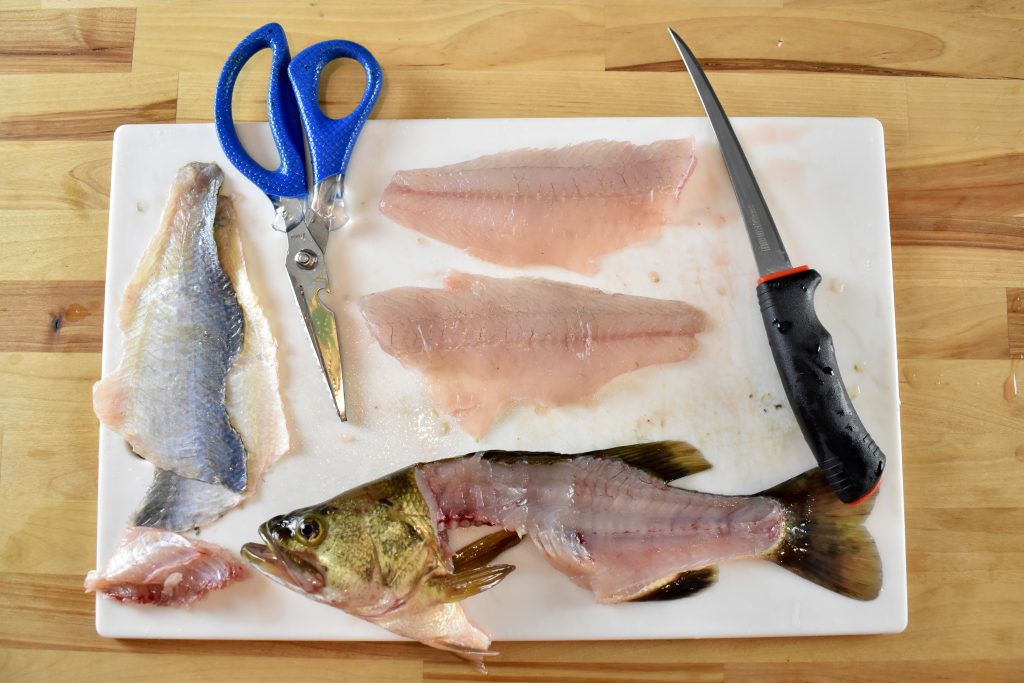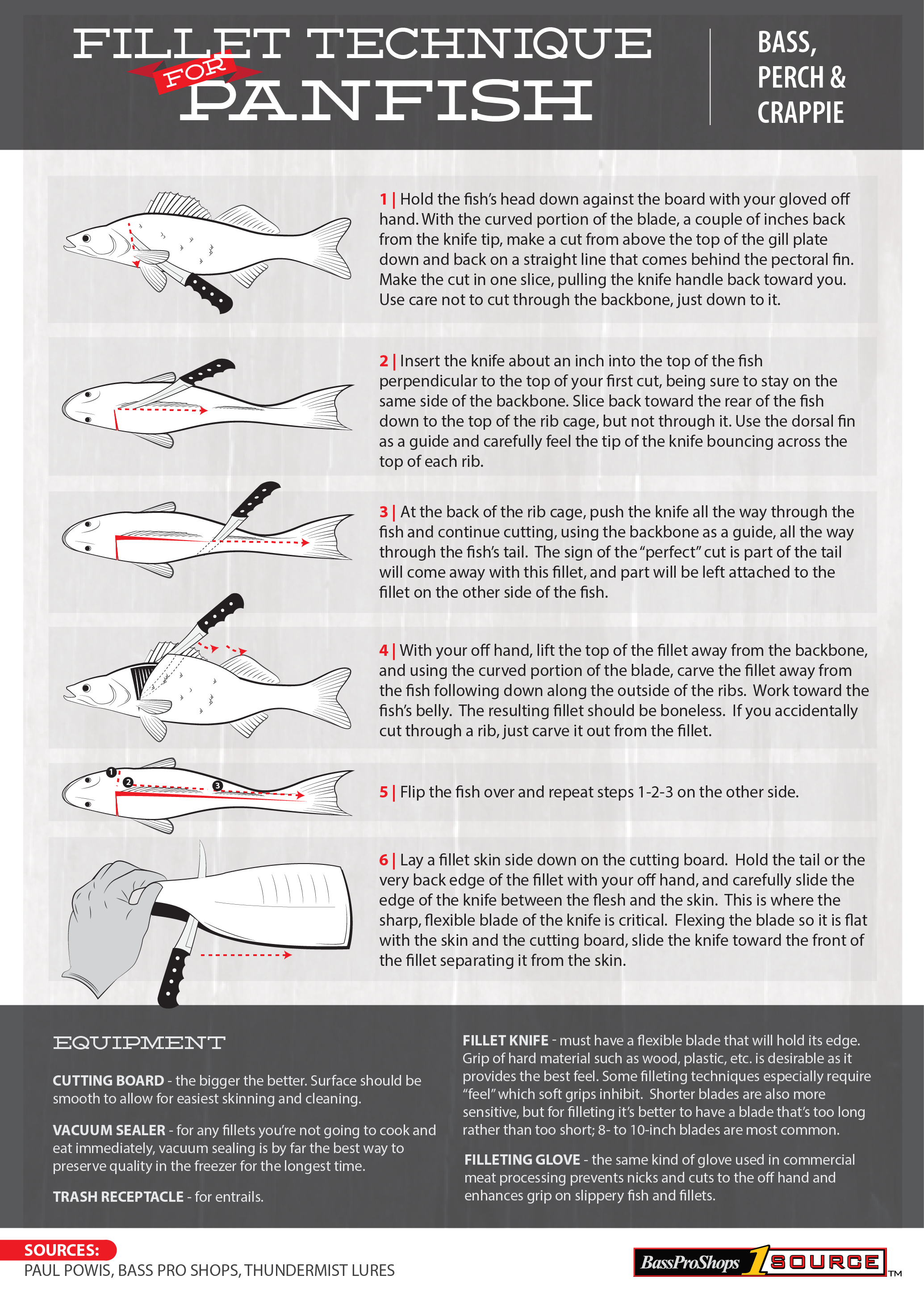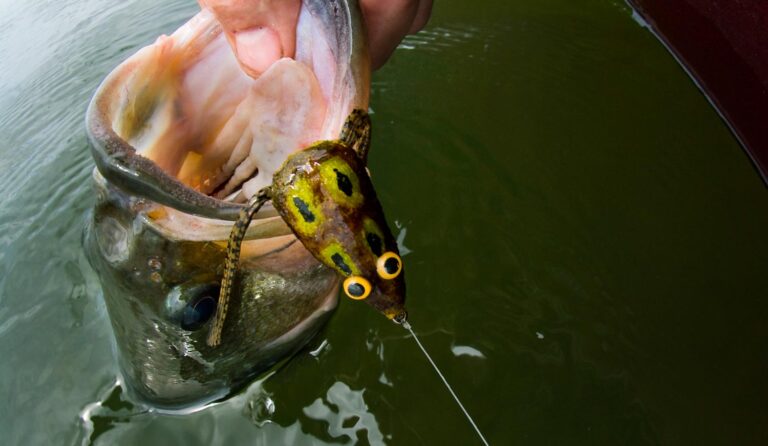How to Fillet Largemouth Bass

To fillet a largemouth bass, first make a diagonal cut behind the gills, then slice along the backbone to the tail. Peel the fillet from the ribs and remove the skin.
Fishing enthusiasts relish the moment they can enjoy the fruits of their labor—especially when it’s a succulent largemouth bass. It’s just as important to know how to properly clean and fillet your catch as it is to know how to hook it.
A well-filleted bass promises a delightful meal, free of bones and full of flavor. This guide provides a straightforward method for filleting largemouth bass, ensuring that even a novice can achieve results like a seasoned angler. Emphasizing a quick and efficient technique allows you to spend more time enjoying your catch and less time preparing it. Having the right tools and a clear guide makes filleting bass simple, letting you relish the catch of the day with minimal fuss.
Tools And Preparation For The Task
Choosing the right knife is crucial to fillet a Largemouth Bass effectively. You’ll need a sharp, flexible filleting knife that’s about 6 to 9 inches long. This allows for precision cuts and easy maneuvering around the bones.
Keeping your workspace clean is equally important. Always begin with a sanitized cutting board and ensure that your hands are washed. Throughout the filleting process, rinse your knife occasionally to prevent any buildup of debris.
| Filleting Knife Length | 6-9 inches |
| Knife Characteristics | Sharp and flexible |
| Preparation Step | Sanitize cutting board |
| Hygiene Tip | Wash hands before starting |

Credit: 1source.basspro.com
Identifying The Anatomy Of Largemouth Bass
Understanding the anatomy of a Largemouth Bass is vital for proper filleting. Key anatomical landmarks include the dorsal fin, pectoral fins, and the lateral line. The bass has a distinct head, body, and tail, which are separated by noticeable curves.
One must also acknowledge the muscle structure underneath the skin. The Largemouth Bass has a series of muscles along its sides, known as fillets. These are the prime sections of meat that anglers seek.
| Anatomical Landmark | Location |
| Dorsal Fin | Top of the Bass |
| Lateral Line | Midline from head to tail |
| Pectoral Fins | Just behind the head |
| Fillets | Along the sides |
To fillet, start behind the gills and slice downward. Do this until you reach the backbone. Then, smoothly cut along the dorsal line towards the tail. Always use a sharp knife. Be gentle to avoid damaging the delicate fillets.
Step-by-step Filleting Process
Making the initial cuts requires a sharp knife. Place your bass on a stable surface. Make a deep incision behind the gills. Angle your knife toward the head. Cut down to the backbone.
Removing the fillets begins along the backbone. Insert the knife blade fully. Slice from the incision down to the tail. Keep your knife flat against the bones. This ensures a clean removal.
For skinning the fillet, lay it skin-side down. Make a small cut between skin and meat near the tail end. Hold the skin; slide the knife away from you. Keep the blade angled slightly downwards.
To debone the fillet, locate the pin bones. They run along the middle. Use tweezers or pliers to pull out each bone. Check for missed bones by feeling the fillet.
Tips And Tricks For Perfect Fillets
Perfect filleting of Largemouth Bass begins with the angle of your blade. For clean cuts, tilt the knife at a slight angle. Be consistent while slicing through the flesh. The right angle ensures meat stays on the fillet, not on the bones.
When handling the rib cage, use a flexible knife. Gently glide the knife along the bones. This technique helps in removing the fillet without getting bones. Follow the rib cage contour to keep the meat intact.
To minimize waste, be meticulous with your cuts. Guide the blade closely along the spine. Make sure to extract all edible parts. Practice makes a perfect fillet, and less waste over time. Keep filleting and you’ll master these steps.
Storing And Cooking Your Bass Fillets
Storing your bass fillets correctly is crucial for keeping the fish fresh. Use sealed containers or vacuum-seal bags to prevent air exposure. Place the fillets in the coldest part of your refrigerator. Ensure temperatures are below 40°F (4°C). Consume the fish within two days for best quality. For longer storage, freeze the fillets. Wrap them tightly and store them at 0°F (-18°C) or colder for up to three months.
For delicious bass fillets, consider various cooking methods. Grilling, baking, and frying are popular. Season the fish well with herbs and spices. Cook until the meat is opaque and flakes easily with a fork. A quick tip: Preheat the grill or oven before cooking. This ensures even cooking and a perfectly cooked fillet.

Credit: m.youtube.com

Credit: m.youtube.com
Frequently Asked Questions Of How To Fillet Largemouth Bass
What’s The Easiest Way To Fillet A Bass?
To easily fillet a bass, start by making a cut behind the gills, running the knife along the backbone to the tail, then remove the skin and bones. Always use a sharp fillet knife for precision and control.
Are Largemouth Bass Good To Eat?
Yes, largemouth bass are edible and can provide a tasty meal. Their flesh is firm and white, offering a mild flavor that many find appealing. Always ensure they come from unpolluted waters and are cooked thoroughly.
How Do You Prepare A Largemouth Bass To Eat?
Begin by descaling the largemouth bass with a fish scaler or knife. Next, remove the innards and gills, and rinse the fish thoroughly. Pat the fish dry and it’s ready to cook according to your recipe.
How Tasty Are Largemouth Bass?
Largemouth bass have a mild, fresh flavor and a tender texture when cooked. This fish suits various seasonings and cooking methods, appealing to many palates.
Conclusion
Mastering the art of filleting a largemouth bass is truly a game-changer for anglers and home chefs alike. With the steps outlined in this post, you now hold the key to preparing impressive, boneless fish fillets. Remember, practice makes perfect, so grab your fillet knife and get started.
Before long, you’ll be filleting with confidence and serving up delectable bass dishes that are sure to impress.




